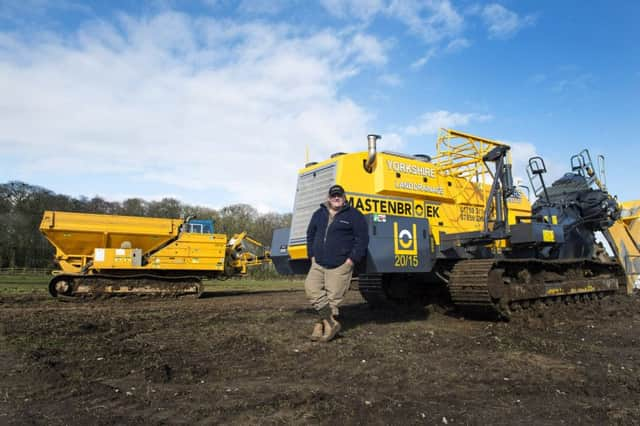Venture tackling flood pain of farmers


John Sellers rides the fields on a GPS-enabled quadbike to survey fields and build up a 3D picture of the heights and slopes of the land.
This helps him to design an underground drainage system on a laptop, which is then programmed into heavy machinery and means drain-piping can be laid within an accuracy of a few millimetres.
Advertisement
Hide AdAdvertisement
Hide AdIf another storm hits, the floodwater runs into the underground drain system and into an excavated ditch, protecting the field from the worst of the weather.
The efficiency of the system has proven a hit with landowners and Mr Sellers’ company, Yorkshire Land Drainage Ltd, has been inundated with work since the storms hit late last year. He said: “Since December, we’ve been very busy helping farmers who’ve been hit by flooding.
“Once a field has flooded, we have to let it sipe and dry up.
“Only when the water levels have gone down can you build the drain system that protects the field from any future floods.”
Advertisement
Hide AdAdvertisement
Hide AdBecause of this, spring – when the rain starts to ease off and the land becomes less sodden – is a particularly busy time of year.
The rationale behind the work is as obvious as might be expected.
“It costs the same to grow a bad crop as it does a good one,” said Mr Sellers. “If you’ve got three acres standing under water that’s three acres of lost yield. So draining increases crop yields.
“Livestock farmers also need good grass to feed their horses or sheep.
Advertisement
Hide AdAdvertisement
Hide Ad“Grass doesn’t grow under water, and standing water isn’t good for the animals either.”
Mr Sellers, 47, learned the techniques of land drainage from his father, who used more traditional equipment.
“My father started in this business 50 years ago with a shovel. I started helping him when I was three years old – I’ve been in the drainage business all my life,” he said.
“He would lay pipe manually and splash water into it to see if it would run the right way.
Advertisement
Hide AdAdvertisement
Hide Ad“He once drained 140 acres like that; it took him maybe a couple of months. If I did that with this technology it might only take three weeks.”
The extent of the winter flooding means that the jobs coming through to Mr Sellers’ business were growing in size and complexity; some have required him to dig trenching 24 feet deep.
He had just spent £380,000 on his new programmable land drainage trencher, but needed to order more materials up front and hire contractors to get the job done.
Fortunately, he had an understanding banker.
Recognising that 30-day invoicing could be burdensome for a small business – Yorkshire Land Drainage only employs a maximum of 10 people at any one time – Lloyds Bank provided a £15,000 overdraft on his business account to ensure that cashflow problems wouldn’t derail his work.